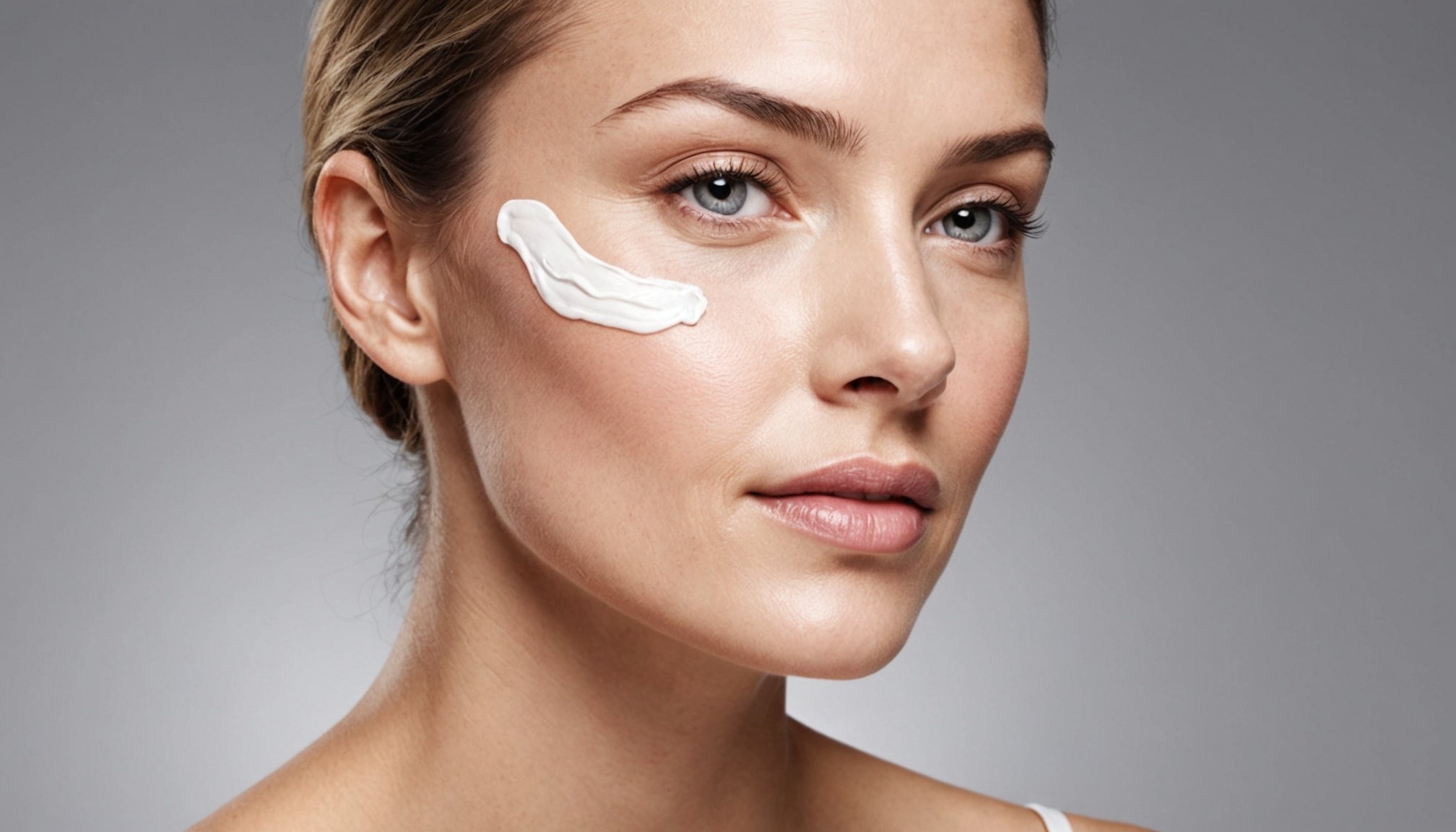Key Ingredients for Moisturizers
When selecting a moisturizer, understanding its ingredients can be crucial. Hydration is the foundation of any moisturizer, and hydrating ingredients, like hyaluronic acid and glycerin, draw moisture into the skin, ensuring it remains plump and supple. Look for these in your moisturizer to keep your skin well-hydrated.
Incorporating anti-aging components is equally essential, particularly in mature skin-care products. Retinol, vitamin C, and peptides can help reduce the appearance of fine lines and stimulate collagen production, offering youthful radiance. Anti-aging ingredients work together to enhance the skin’s elasticity and firmness while minimizing age spots and other signs of aging.
Additional reading : Master the Art of a Perfect Daytime Smokey Eye: Your Comprehensive Step-by-Step Guide
The choice between natural vs. synthetic moisturizer ingredients often depends on personal preference. Natural ingredients, such as aloe vera and chamomile, can soothe the skin and are less likely to cause irritation. However, synthetic ingredients can offer targeted anti-aging benefits through advanced formulations.
To achieve optimal results, consider a balance of both. When examining product labels, focus on the ingredients that address your unique skincare challenges to maintain a healthy, vibrant complexion. Always choose a moisturizer that aligns with your specific skincare needs for the best outcomes.
In parallel : Mastering Leather Shoe Care: Top Tips to Combat the UK’s Rainy Weather
Understanding Aging Combination Skin
Aging combination skin features a blend of both oily and dry regions, usually marked by an oily T-zone and drier cheeks. Individuals with this skin type often grapple with hormonal shifts that may lead to increased sebum production in some areas while experiencing dryness in others. This duality creates unique challenges in meeting the skin’s distinct skincare needs.
Common concerns for those with aging combination skin include uneven texture, fine lines, and an occasional breakout. The challenge lies in balancing moisture without exacerbating oiliness, all while tending to aging signs. Thus, products that cater to specific skin types can significantly improve skin texture and appearance, offering more tailored solutions.
Targeted skincare solutions are essential for addressing such complexities. Formulas that incorporate both hydrating and oil-controlling ingredients can effectively address the diverse needs of aging combination skin. Products with niacinamide, for instance, help regulate oil production while minimizing the appearance of pores. Meanwhile, hyaluronic acid can provide intense moisture without adding excess oil.
With an understanding of these characteristics, seeking products designed specifically for combination skin types will enhance the pursuit of a balanced and healthier complexion.
Types of Moisturizers
Choosing the right types of moisturizers depends greatly on your skin’s unique needs. Each type offers distinct benefits and can cater to various skin types.
Creams vs. Gels
Creams are typically richer and provide intense hydration, ideal for those with dry or mature skin. They form a barrier that locks in moisture, enhancing skin’s suppleness. In contrast, gels are lighter, water-based, and absorb quickly, making them suitable for oily or combination skin types. Both have unique advantages, and selecting between them depends on your skincare routine and personal preference.
Lotions for Lighter Hydration
Lotions strike a balance between creams and gels, offering moderate hydration without a heavy feel. They’re perfect for normal to slightly dry skin and are ideal during warmer months when skin demands lighter hydration.
Oil-Based Moisturizers
For those with extremely dry skin in need of reparative moisture, oil-based moisturizers provide deep nourishment. They prevent water loss and keep skin hydrated longer. Identifying your skin type and its skincare needs is crucial to choosing the right moisturizer. Combining different products might yield optimal outcomes for more tailored hydration.
Application Tips for Maximum Hydration
Achieving maximum hydration for aging combination skin requires precise techniques. Proper moisturizer application is key to ensuring your skincare products deliver the best results. Start by cleaning your face to remove impurities, allowing better absorption of the products. Use gentle, circular motions when applying the moisturizer to stimulate blood circulation and enhance absorption into the skin layers. It’s also crucial to apply moisturizer to damp skin. Damp skin absorbs products more effectively, locking in hydration rather than allowing them to evaporate. This step can make a significant difference, especially for aging combination skin, which requires maintaining moisture balance.
Layering products appropriately within your skincare routine can further boost hydration. Start with lighter products, like serums, and gradually layer with thicker moisturizers. This method ensures that each product is absorbed thoroughly. Pay attention to the timing in your routine. Applying moisturizer promptly after cleansing maintains skin hydration better. Experiment with different strategies to find what works best for your skin type and adjust as necessary. Adapting your routine to meet your evolving skincare needs can lead to a healthier, more vibrant complexion.
Product Recommendations
Selecting the best moisturizers for aging combination skin involves understanding which products offer real user experiences that reflect effectiveness. Users consistently praise products that deliver hydration without leaving an oily residue. Moisturizers containing ingredients like hyaluronic acid and niacinamide are often top-rated for maintaining skin’s balance.
Prices of these products can range significantly, with budget options starting as low as £10, while luxury brands may exceed £50. Accessibility remains crucial, as many users prefer products easily available in local stores or online, favouring brands with broad distribution networks.
When comparing user reviews, a pattern emerges whereby consumers value lightweight formulas because they ease daily application, reducing the complexity of a skincare routine. Additionally, brands that emphasize natural ingredients tend to garner positive feedback, especially from those mindful of synthetic ingredient exposure.
To navigate these options effectively, consider both product reviews and specific formulation benefits. Users often recommend trying more than one product to determine what truly meets your skin’s unique skincare needs. Balancing affordability and efficacy can lead to the discovery of a moisturizer that enhances your complexion’s health and vitality.
Skin Care Routines
Designing an effective skincare routine tailored to your specific needs involves understanding daily skincare essentials and prioritising consistency. A structured, daily regimen can foster healthier skin and address the unique challenges of aging combination skin. It’s vital to cleanse gently, targeting oily areas while preserving natural oils in drier regions.
Exfoliation is crucial just a few times a week to remove dead skin cells and unclog pores, enhancing the absorption of subsequent treatments. Choose a mild exfoliant to avoid irritation, especially in sensitive areas. Integrating serums into your routine can rejuvenate skin by delivering potent active ingredients like niacinamide or hyaluronic acid. These serums target specific skincare concerns, such as fine lines and uneven texture, delivering targeted nourishment.
Consistency is key in skincare, as long-term benefits arise from regular, dedicated care. Establishing a habit ensures all products work synergistically over time, leading to noticeable improvements in texture and appearance. Adjust your routine as needed based on seasonal changes or shifts in skincare needs. Whether experimenting with new products or sticking to trusted staples, staying informed and adaptable will help in achieving a balanced, refined complexion over time.
Understanding Aging Combination Skin
Aging combination skin typically exhibits both oily and dry characteristics, posing unique skincare challenges. The T-zone—forehead, nose, and chin—often experiences increased oiliness due to heightened sebum production. In contrast, the cheeks may appear drier, necessitating a carefully curated skincare routine to accommodate these differing needs.
Common concerns associated with aging combination skin include fine lines, uneven texture, and a tendency for occasional breakouts. Addressing these issues requires a delicate balance of moisture and oil control to prevent exacerbating dryness or encouraging excess oil production.
Targeted skincare solutions are essential when tackling the complexities of combination skin. Products formulated with niacinamide can effectively regulate oil production while refining pore appearance, proving beneficial for oily sections. Meanwhile, hyaluronic acid offers intense hydration without contributing to oiliness, ideal for drier areas.
Selecting skincare tailored to your specific skin types ensures more consistent and favourable results. Understanding your skin’s unique skincare needs allows for a balanced, healthy complexion. Focus on products that articulate clear and specific benefits to ensure they align with the demands of your aging combination skin.










